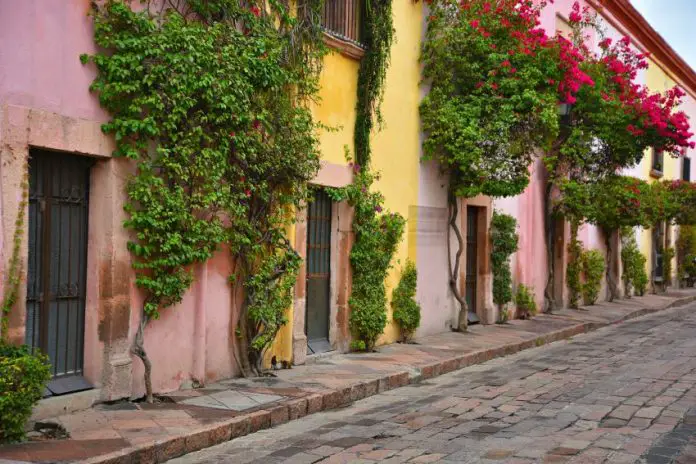This week in the MND Where to Live in Mexico 2024 Guide: Bajío Trio, we are moving inland to explore three central Mexican locations that don’t get a lot of coverage in the “where to live” online ecosystem.
San Luis Potosí, Querétaro, and Aguascalientes might be the three largest cities you’ve never heard of. These eponymous cities are by no means “unknown,” having a combined population exceeding 6.5 million inhabitants. Two cities are UNESCO World Heritage Sites, and the three states combined have 17 Pueblos Mágicos. Each has traits particular to their central role in Mexico’s Spanish colonial legacy and 21st century economy. San Luis Potosí and Querétaro share a border, while Aguascalientes is a landlocked island of sorts, as well as one of Mexico’s smallest states by population and landmass. Another similarity is a seasonally moderate high plateau climate (temperate, semi-arid; more arid in northerly San Luis Potosí). The temperature may spike higher in May-June and lower in December, but stable, low-humidity highland living is the norm.
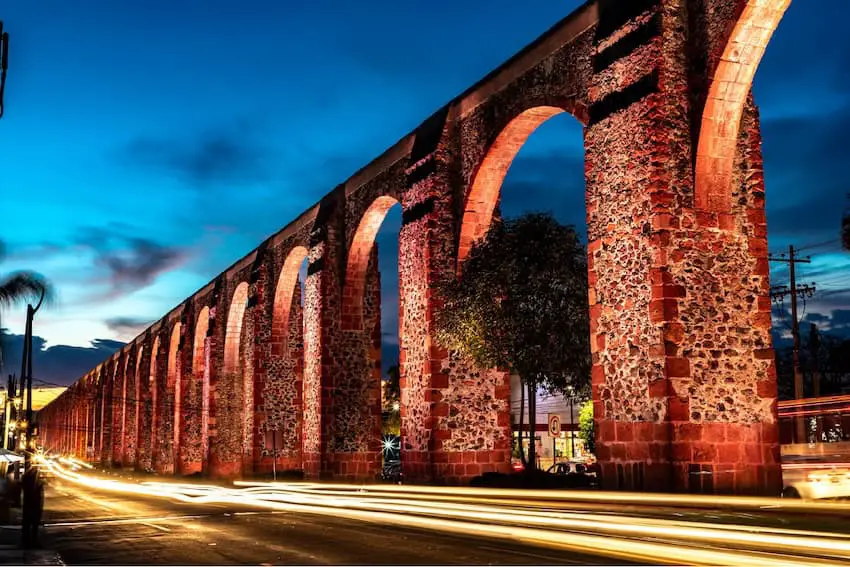
When it comes to connectivity (one of our six criteria in the Mexico Living matrix), Querétaro leads this trio of places. Its international airport offers more choice for US and Mexico destinations (though still limited), when compared to Aguascalientes or San Luis Potosí. It’s also a 2.5 hour drive to Mexico City (120 miles) and may soon feature passenger rail service to the capital.
Querétaro also leads this trio when it comes to a booming economy. While Aguascalientes is an automobile manufacturing town (Nissan) and San Luis Potosí carries its BMW pedigree, Querétaro’s economy is mega-diverse. Central to this success is the “Triple Helix Model,” a framework of close cooperation between government, industry, and academia. Automobiles, aerospace and appliances dominate. Querétaro also leads in medical care. One 2021 ranking gives Querétaro six of Mexico’s top 10 hospitals. It’s also a great location for box-store shopping, should such things matter to you.
Aguascalientes
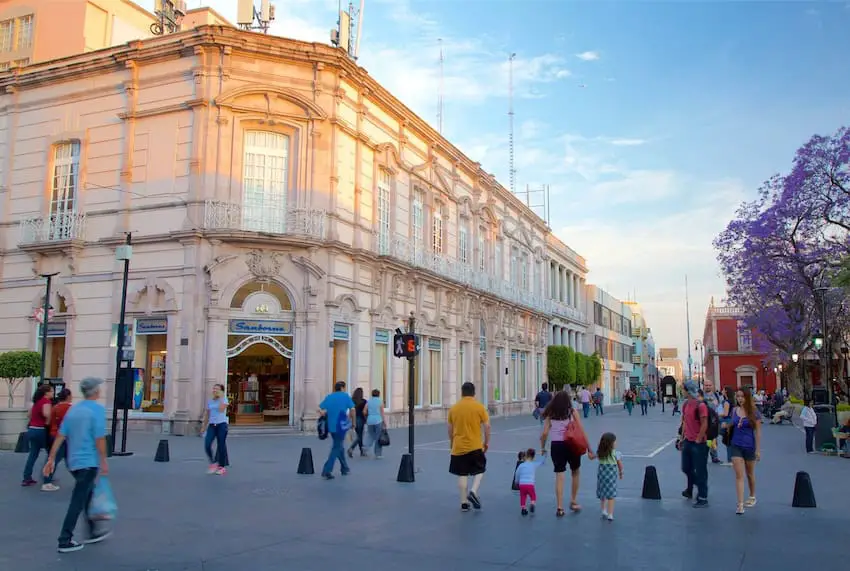
Capital of the state bearing the same name, Aguascalientes (altitude 6,200 feet) is today a burgeoning commercial and industrial center in the heart of a state known for its brave bullfighters, fine wines (a four hundred year tradition), gentle climate and relaxed provincial character. It is Mexico’s second smallest state in terms of area; however, it enjoys an important commercial position thanks to the factories that ring the city that produce a good portion of Mexico’s high-tech manufacturing output.
City attractions include thermal springs (Ojocaliente, Balneario Valladolid), museums, green spaces, pedestrian-friendly streets, and the state’s annual fair. The Feria de San Marcos, dating back to 1604, is held each April-May and is one of the world’s ten largest agricultural fairs. There are dozens of distinct “barrios” surrounding the urban core – too many to include here. Other than the city’s foreigner, managerial manufacturing workforce, you won’t find many foreign-born retirees or remote workers in Aguascalientes. This can feel either refreshing (with very affordable home rental costs to boot) or isolating, depending on your desire for an authentically Mexican experience.
San Luis Potosí
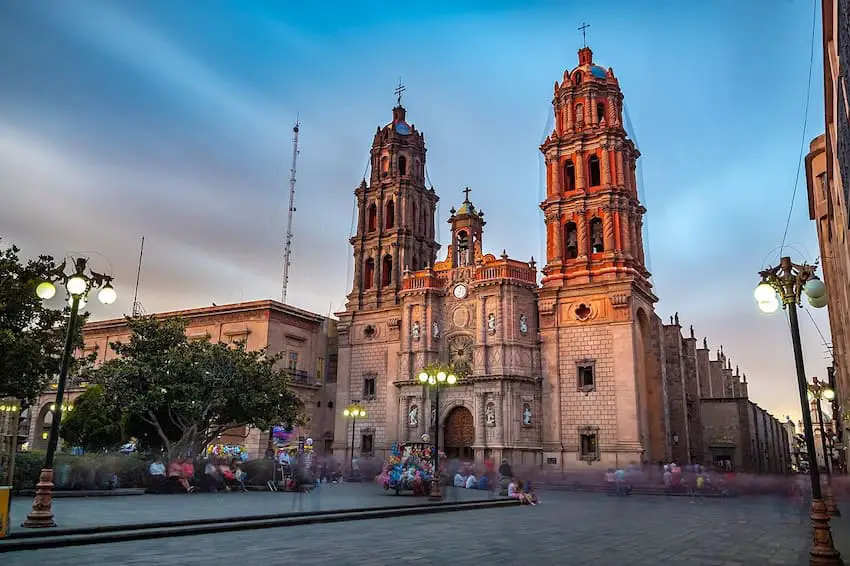
Continuing due east is the city-state of San Luis Potosí (170 km). This vast state stretches across the windswept, sunbaked plains of north central Mexico, refreshingly cooler in its Veracruz-facing Sierra Huasteca tropical highlands. Its importance in Mexican history spans four centuries of influence, making its capital city of the same name (a UNESCO World Heritage Site) a city of renown.
Mexico has too many “best kept secret” places to explore, but the state capital is certainly one of them. A mining boom in the late 16th century was followed by an era when San Luis Potosí assumed the role of Mexico’s most important northern city, whose domain once stretched from Louisiana to New Mexico. For much of the colonial era, its mining and ranching wealth bestowed on the city many elaborate neoclassic and baroque public buildings, mansions and churches. It has one of Latin America’s longest pedestrian thoroughfares (Calzada de Guadalupe, stretching some 3 kilometers) and Mexico’s second largest urban park.
The historic center, beautifully illuminated at night, features tiered esplanades, several handsome plazas, flower-filled parks, and an active cultural scene. Three fine museums (Federico Silva, Leonora Carrington, Museo Nacional de la Mascara), concerts, film, and theaters (Museo Francisco Cossío, Teatro de la Ciudad, Teatro de la Paz) keep locals and a smattering of foreigners engaged socially. The dining and nightlife here are more varied than in many colonial cities.
The surrounding state’s topography is similarly diverse, due to the Sierra Madre Oriental range that runs through the eastern part of the state. Also running north-south is the Sierra Gorda range (part of Querétaro state), creating a myriad of valleys and plains. Much of the state’s pre-Hispanic and colonial influence can still be seen today in the towns and villages of this region (there are six Pueblos Magicos, including two of Mexico’s most bizarre — abandoned mining town of Real de Catorce and whimsical jungle sculpture garden at Xilitla).
Querétaro
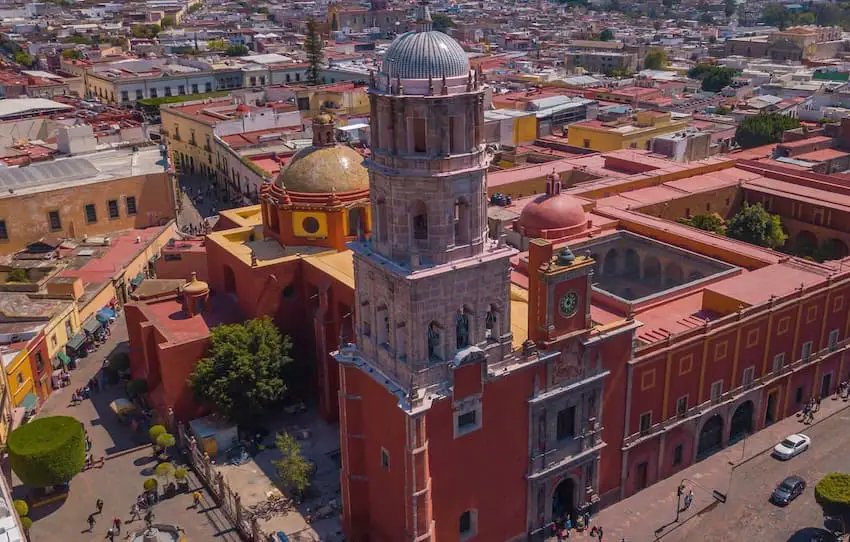
When it comes to Mexico living, Querétaro State might just be the hardest to pronounce (“que-REH-tah-roh”) and easiest to embrace. It earns a very solid “4” on our 1-5 scale. Growth has diminished, in some ways, the city’s provincial town character but also bestowed the city with one of Mexico’s highest living standards and best-educated populations.
A commercial center of nearly one million inhabitants, Querétaro lies at the junction of two major interstate highways, routes 57 and 45 (construction delays are endemic of late). Located only 220 kilometres from Mexico City, Querétaro has become a satellite of sorts for the Capital. Several large manufacturing plants have relocated to the city’s outskirts, and thousands of businessmen commute between the two cities.
The city has preserved its historic downtown and has taken steps to beautify many areas. The Historic Monuments Zone of Querétaro was named a UNESCO World Heritage site in 1996, as an exceptional example of a colonial town whose layout symbolizes its multi-ethnic population. It is also endowed with a wealth of outstanding buildings, notably from the 17th and 18th centuries. Querétaro holds several treasures, and a friendly sense of civic pride prevails. The historic city center is filled with lovely colonial mansions, immaculate pedestrian walkways and quaint plazas little changed since colonial days. Its 18th century Acueducto of 74 towering arches (some standing 100 feet tall) are dramatically lit at night, stretching for miles across a broad valley on the City’s eastern edge.
Living here means finding an outlying, suburban neighborhoods of El Refugio, Jurica, Juriquilla and El Pueblito are all excellent options. If that doesn’t appeal, then try a surrounding hillside suburb or a spot in the historic city centre — which is refreshingly quiet for a city this size. More central living can be found in the Jardines de las Haciendas, Carretas, Alamos, and Campanario areas. There’s housing variety and general affordability, along with some choice assisted-living options (Spanish chain Ballesol is one of Mexico’s best options). Expats are scattered across this landscape or living in “compound-like” gated communities, so it will take some effort to connect with other English speakers, though the opportunities are there for those who seek them.
One blogger describes living here (compared to, say Guadalajara) this way: “Querétaro is a button-down corporate town, where people work for others and have the more conservative lifestyle that (sic) dictates. I think this tamps down the exuberance I’ve grown to love elsewhere in Mexico. Locals are friendly and educated, but readily admit to being more reserved than their fellow countrymen.”
Sounds pretty good to me.
The ratings
A full breakdown of our rating system can be found here.
![]()
What did we get right? What do you disagree with? Let us know in the comments.
You can see more of our Where to Live in Mexico 2024 series here, including ratings for Yucatán, Oaxaca, Quintana Roo, the Baja California peninsula, Jalisco and a Pacific trio of beachside cities.
Author Greg Custer lives in Mexico. He’s worked for over 40 years in international tourism, educating travel advisors around the world about Mexico and other Latin American destinations. He helps folks explore Mexico for living at www.mexicoforliving.com.
